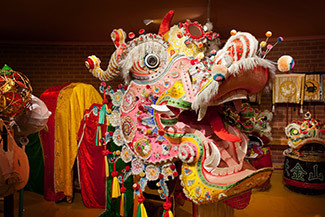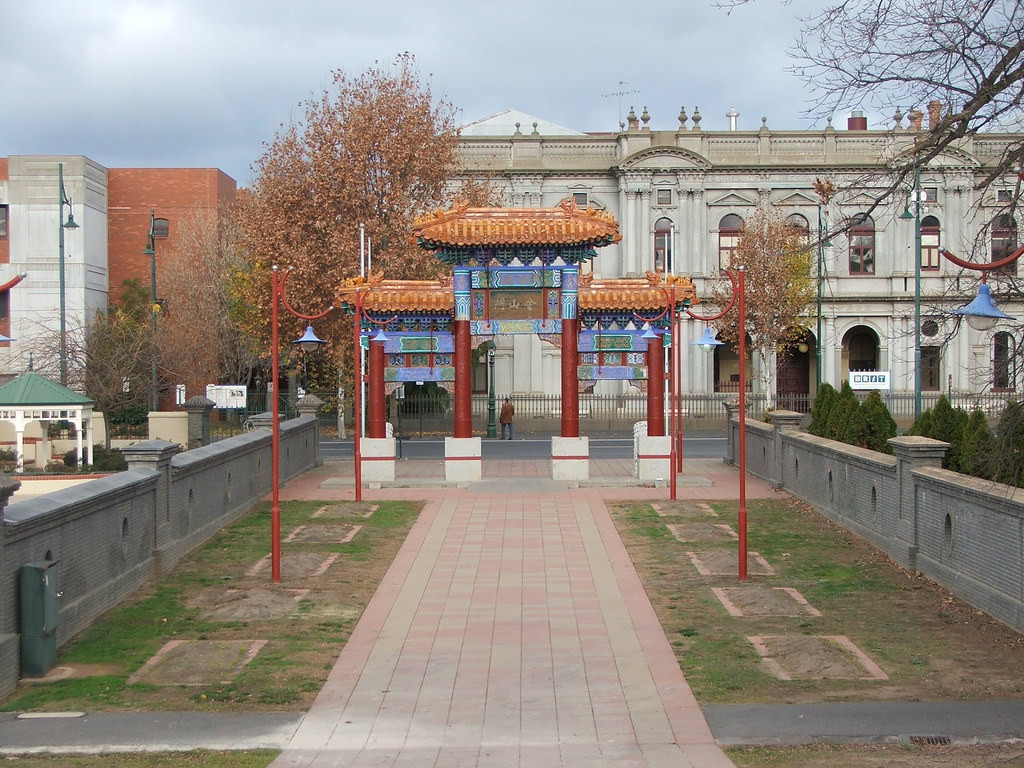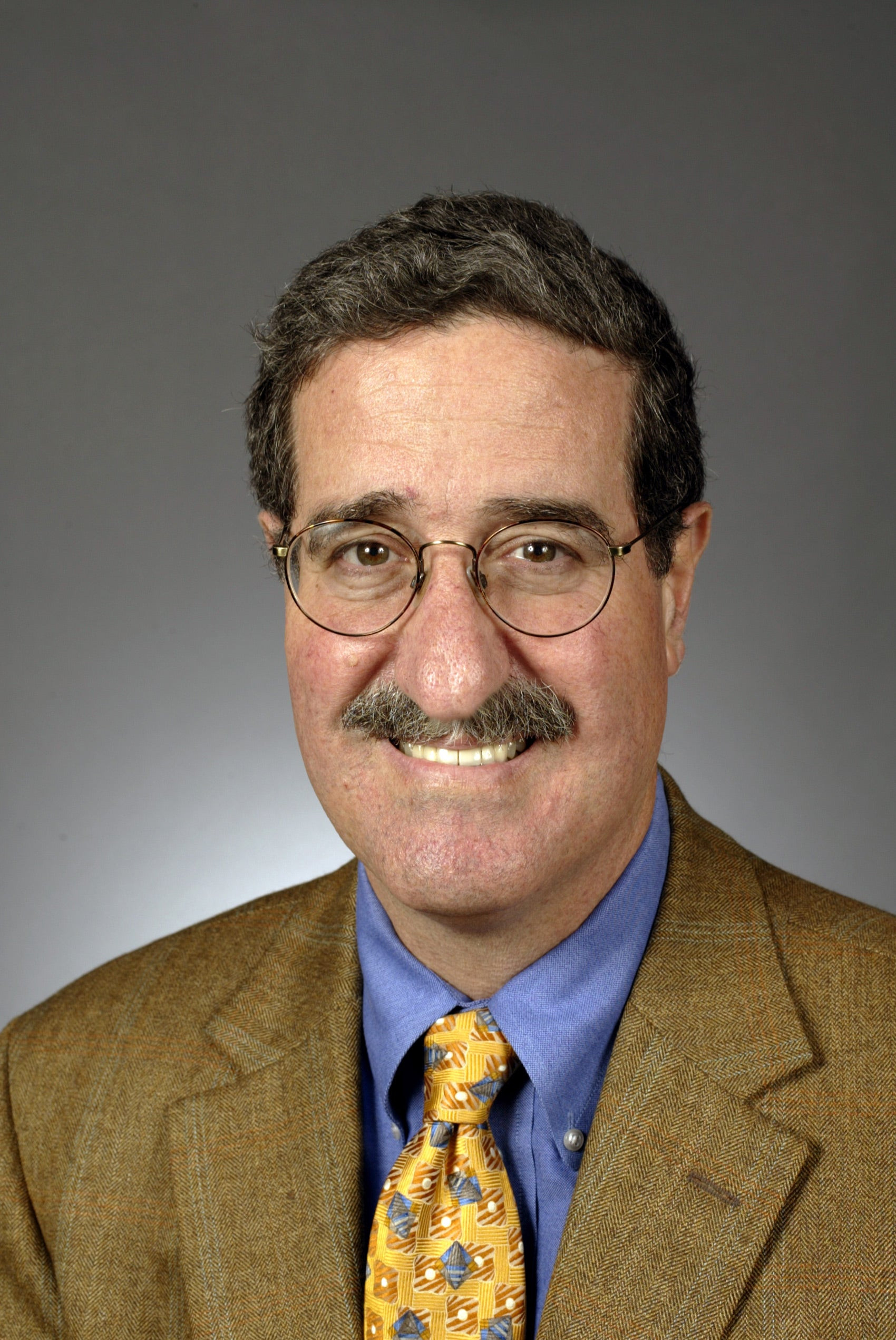In May, Bendigo's Chinese community, in fact, the entire regional Victorian city, was rocked by an act of violence against two of its oldest citizens. Loong and Sun Loong — some of the world's oldest and longest Golden Dragons, who have collectively paraded at Bendigo's Easter Fair from 1901 until just a few years ago — were vandalised. Though the matter is before the courts, it's hard not to see the actions of the alleged attackers — who prosecutors alleged in court also damaged additional cultural artefacts at Bendigo's Golden Dragon Museum, Buddhist monument the Great Stupa and the local cemetery — as racially motivated. And the community is still reeling.
Hugo Leschen, CEO of the museum, described the damage as "both a slap in the face and a punch in the guts". He says he had both an emotional and intellectual response. "The emotional response is: How can somebody not feel the way I feel about these objects? Perhaps not everyone has to love them, but at least there is a measure of respect and wonderment and awe. How could someone come to this place and purposefully and consciously do what they did? And the intellectual response is: What does that actually say about the broader community?"
It's far from the first time Bendigo and its Chinese community have overcome adversity to ensure these precious artefacts live on. Nothing encapsulates that fight more than how their latest dragon — Dai Gum Loong who, fortunately, was not damaged — came into existence. This is the story of Anita Jack, the woman determined to fortify the connection between Bendigo's Chinese roots and the wider community, and how she built a dragon. It involves lions, world records and … Richard Branson.
The Golden Dragon's Roots
The 1850s Gold Rush saw a wave of early Chinese migrants arrive in Australia. Many boarded overcrowded ships in the hope of reaching what they heard referred to as Dai Gum San, or the Big Gold Mountain. This is when early Chinese migrants arrived in the nascent mining town of Bendigo (then known as Sandhurst), about 150 kilometres from Melbourne. They made their way from Robe in South Australia on foot, to bypass a discriminatory tax imposed on Chinese arrivals at Victorian ports.
In Bendigo, Chinese new arrivals lived in segregated villages. They made these small pockets a home away from home, which included re-creating traditional ceremonies involving bright lanterns, loud drums and firecrackers — much to the fascination of European settlers. In 1879, when it came time to put on a parade at Easter to raise money to build a hospital, the Chinese community was invited by the Easter festival organisers to participate. "They gave donations to the hospital and the benevolent home … With this activity [and the invitation to participate in the parade], the Bendigo Chinese felt more included within the community," says Anita Jack, former general manager of Bendigo's Golden Dragon Museum.
In a time when anti-Chinese laws and discrimination were rampant, Jack says: "It also helped with understanding their culture and accepting it, and in some ways, respecting it." But it took a few more parades until the first dragon debuted.
The Birth of a Tradition
While there is evidence other smaller dragons paraded in Bendigo from 1892, the first evidence of Bendigo's famous Loong parading at the Easter Fair comes in the form of a photograph taken in 1901. The name "Loong" directly translates to "Dragon". Loong is 29 metres in length, his colourful body adorned in green, gold and red satins and pom poms, with a giant head and a mouth that could eat you whole. "Even if [the European settlers] didn't always understand what they were seeing, they seem to have been very positive about the spectacle created by the dragon," says Leigh McKinnon, research officer at the Golden Dragon Museum.
Citing local news reports from the time, he says parade goers were captivated by Loong's "lively movements" and "glittering scales". "The dragons are supposed to be a sort of living creature," he explains. "They're woken up every year, and they're blessed and fed. At the start of their working life, their eyes are dotted with chicken blood, to give them that lifeblood to enable them to see."
Bendigo's Chinese population dwindled after the Gold Rush, as it was easier to find work in capital cities, but each Easter parade Loong drew crowds from all over the local area. Growing up in 70s Bendigo with Chinese heritage, Anita Jack lived a kind of double life. "[There was] social discord, racism, no-one there looking the same as you, no-one there eating the same food that you ate," she told ABC podcast Days Like These. But then when Easter approached, schoolyard rumours about Jack and her family would start swirling. The good kind. "[People would say:] 'Don't mess with her too much, because there's a dragon,'" she says. "I probably hammed it up a little bit as well, and said, 'Yes, my dad does own a dragon!'"
Jack's father Russell was the treasurer of the Bendigo Chinese Association. In fact, when Prince Charles and Princess Diana visited Bendigo as part of their Australian tour in 1983, they were chaperoned by Russell and his wife Joan and treated to a dragon performance. Loong had retired by 1969. His replacement, Sun Loong, made his debut the following year. Sun Loong is a terrifying, beautiful, fantasy novel come to life. "Sun Loong is an impressive dragon with his bright pink cheeks, yellow golden chin, multicoloured skirt and shimmering scales," says Jack.
There are 6,000 handmade scales running the length of his 100m-long body, which set a new world record. It takes about 57 carriers to parade Sun Loong, the sheer size of him taking up the entire width of the parade route as he snakes down it like a ribbon, making S shapes through the air. Every weekend for the three months leading up to the Easter parade, the whole Jack family gathered together in a huge shed owned by the Bendigo Chinese Association, piecing Sun Loong together. A primary school-aged Jack would rollerskate around the shed delivering tools and other materials to her family members as they tied ropes to bamboo hoops, repaired satins, resewed baubles and matched hundreds of nuts to bolts. "I was unconsciously absorbing how to build a golden dragon," she says.
The Legacy of a Dragon
Jumping ahead to 2006, Loong and Sun Loong were on permanent display inside Bendigo's Golden Dragon Museum, which was co-founded by Jack's parents. Jack's mother was dying and during this time a conversation about the future of Sun Loong, who was approaching 50 years old, came up. A concerned Jack asked Bendigo's Easter Fair committee who would succeed Sun Loong. "It was like I had dropped a bomb … All the blood ran out of everyone's faces," she says. "They said: 'What are you going to do about it?'"
Jack was charged with replacing Sun Loong, which was no small feat. Research officer Leigh McKinnon (who isn't of Chinese descent, but is deeply invested in his hometown's history), would help Jack organise the crafting of a new historically and culturally accurate dragon, the longest of its kind. "There's an excitement about bringing to life another one of those creatures, which only happens on that scale once every, perhaps 50 years or more," says McKinnon. But after China's Cultural Revolution, ligation artists — dragon- and lion-makers — were thin on the ground.
McKinnon and Jack became dragon spotters, poking around every corner of the internet, scoping out dragon-makers in China, South-East Asia, Malaysia and Indonesia. "I wanted the dragon-maker to have history and knowledge and a pedigree to them," says Jack. "And as we delved deeper, we realised that the dragon-makers that were residing in Hong Kong had been taught these crafts from a master. Their tradition had been handed down."
So, Jack and McKinnon set off to Hong Kong. It was a hard sell to potential workshops: two regional Australians, only one with Chinese heritage, who were trying to make the longest Golden Dragon in the world to parade on a Christian holiday. But after asking each shortlisted dragon-maker to make a single dragon scale, using a template based on scales belonging to Loong and Sun Loong, they made their selection. In the end, they went with Master Hui Ka Hung of the Hung C Lau workshop, who works with his father and nephew — three generations of ligation artists. "Hui was what you would call the 'dark horse' of the dragon-makers," says Jack, who shares a Cantonese background with Master Hui. "He was the youngest of the makers I interviewed. I felt he would be amenable to my requests while also allowing me to give him the freedom to add his artistic flair to the dragon."
Jack tasked Master Hui with creating a dragon about 125m long to retain the world record. Over the next two years, Master Hui and his team hand-embroidered and painted about 7,000 mirrored scales. Each scale was then sewn onto the satin that is the dragon's skin, then laid over complex bamboo wickerwork housing hoops and rope to form the dragon's long, lithe body. The $250,000 dragon was paid for by a combination of state and federal government contributions and a viral crowdfunding campaign, but that didn't cover the $100,000 needed to cover transport of the dragon from Hong Kong to Bendigo. After Bendigo MP Lisa Chesters heard that Virgin Australia was launching a new direct route from Melbourne to Hong Kong, Jack made a pitch to Virgin Australia's marketing team: the Golden Dragon Museum would provide a dragon for the launch of the route. What's more, CEO Richard Branson would lead the charge as head dragon carrier. But in return… "I'm building a dragon. And I'd really like you to freight that dragon from Hong Kong to Melbourne, free of charge."
On launch day, Branson, in full costume, with the word "Bendigo" emblazoned across his chest, burst out from under the dragon's head to flashing cameras. A few days later, 12 enormous wooden boxes arrived in an aircraft hangar in Bendigo, filled with flat-packed dragon parts — including hoops, poles, bolts, scales and reams of material. Jack called Master Hui to say the boxes arrived safely, but pointed out the lack of instructions. Hui, his father and his employees all started laughing at Jack. "And he just said to me: 'You know how to do this.'"
Jack thought back to all those weekends in her childhood, piecing together Sun Loong in the shed. "It's cultural knowledge and nothing's ever written down because these are handed down from generation to generation," she says. "It was a combination of remembering as a child the process, the sequence of how you build the dragon, but then it was also thinking about my uncles [who knew rope work] and my aunty, who was a dressmaker; how you need these people with you with these very specific skills so they can do the best job on those dragons to make them last."
A Community Effort
For more than a century, Bendigo's dragons were maintained by regular people using their everyday life skills: embroidery, woodwork, rope work and more. It would be no different this time around. Jack coordinated a huge team of Bendigo community members, including volunteers from the museum, the Chinese Association and the Victorian Embroiderers Guild. The oldest member of the Embroiderers Guild was 96-year-old Gwen Bloomfield, who repaired any dragon scales that had been damaged in transport. Members of the Bendigo Woodturners constructed stands for the new dragon to be placed in the museum. Jack's neighbours shut their motor repair workshop for three days to help out with the metalwork and engineering elements. A few nights before the parade, and after three weeks of round-the-clock shift work, the dragon was complete. "I spent probably 10 minutes just sitting with the dragon and going, 'Oh, wow, can't believe you're done. I cannot believe you're ready to go out,'" says Jack.
They named this dragon Dai Gum Loong — a name that harks back to the days of the Gold Rush when Bendigo was known by Chinese miners as Dai Gum San. Dai Gum Loong was walked from the aircraft hangar where he was built to the parade starting line. The dragon was hard to miss, especially with a police escort and countless volunteer dragon carriers helping him. Word got out about his first, pre-parade, walk. Jack says: "People put their chairs on their verandahs and watched him as he walked through town into the Chinese precinct of Bendigo and … [They] followed him, took photographs, said g'day, rushed out of their houses, got a selfie."
According to McKinnon, Bendigo's Golden Dragons have distinct Qing dynasty design elements, but are also uniquely "of their time," — and Dai Gum Loong was no exception. "Master Hui did a beautiful job of combining those two things, of creating a dragon that is definitely a Hui Ka Hung dragon from the 21st century as well," he said.
The debut of a new dragon is a once-in-a-lifetime event with its own special ritual: The two older dragons, Sun Loong and Loong, are awakened and paraded over to greet the new dragon. Together, they make their way home to the Golden Dragon Museum as a family. The plan was for Jack to chaperone Loong. Her then 84-year-old dad, Russell, was the only living Chinese Association member who had paraded consistently with Loong and Sun Loong. It was possibly the last opportunity he had to walk alongside his old friends. But instead, he chose to walk with the new dragon, Dai Gum Loong. "He said to me, 'I'm not gonna miss this for the world,'" recalls Jack. "You made this dragon. You created this dragon. I'm gonna be there with Dai Gum Loong.'"
A Symbol of Resilience
A huge crowd, more than 60,000 people, turned out in 2019 to see the first parade of Dai Gum Loong: 125m long, head the size of a high school gym's double doors, big popping eyes, a wide open mouth gilded with gold bullion thread, and dotted with thousands of mirrors. "It was electric because everyone was screaming and yelling and cheering and clapping and talking to these dragons," says Jack. The newspaper the next day reads: "DAI GUM LOONG ROARS!"
When Loong and Sun Loong were damaged in May this year, it was an attack on the city. And the city's citizens responded as such. Hugo Leschen, CEO of the Golden Dragon Museum: "The response of the broader community has been one of abhorrence that this behaviour could happen, horror that people would come to Bendigo to do that, and just plain anger, literally, how dare they do that to our treasures."
For Jack, it felt personal. "My immediate thought was, 'How do I tell my father and my daughters?'" she says. "But it wasn't just a personal assault, it was on the entire community [and] all those that respect our cultural heritage. The collection is more than just historical artefacts, it embodies our Australian Chinese history, our civic pride as Bendigonians and our shared identity as immigrants to Australia."
Leschen says that after the attack, a local grandmother brought along her two grandsons who had combined their piggy bank savings to donate $113 to help restore the dragons. Luckily, the federal government has given the museum $100,000 to mend the dragons and other artefacts. The University of Melbourne's Grimwade Centre for Cultural Materials Conservation has already repaired Loong, with plans to "conserve" Sun Loong and the remaining artefacts in the coming months.
Leschen says it's critical the dragons keep parading in Bendigo, more than 100 years after their first parades. "What started here as a story of xenophobia and racism on the goldfields, over a relatively short number of years morphed into a story of multiculturalism and pluralism," he says. "It's unusual for a museum to allow some of its prized exhibits to be paraded along the streets at Easter. You don't see the Mona Lisa being paraded down the Champs-Élysées, or Phar Lap being paraded down [Melbourne's] Swanston Street. But here in Bendigo, our dragons parade, and that's central to the ethos of this community."
This Easter, Leschen says Dai Gum Loong — in all his shimmering, 125m-long glory — will dance and parade his way down the streets of Bendigo to the sound of explosive firecrackers and drums. "He will parade those streets just as he and his fore-dragon and his fore-dragon before him." Jack adds: "For Chinese people, when they see our dragons in the parade, they can't believe it. They look at them and they're like, 'They're spectacular.' And it's only in Bendigo. Can't see that anywhere else. Only in Bendigo."


















